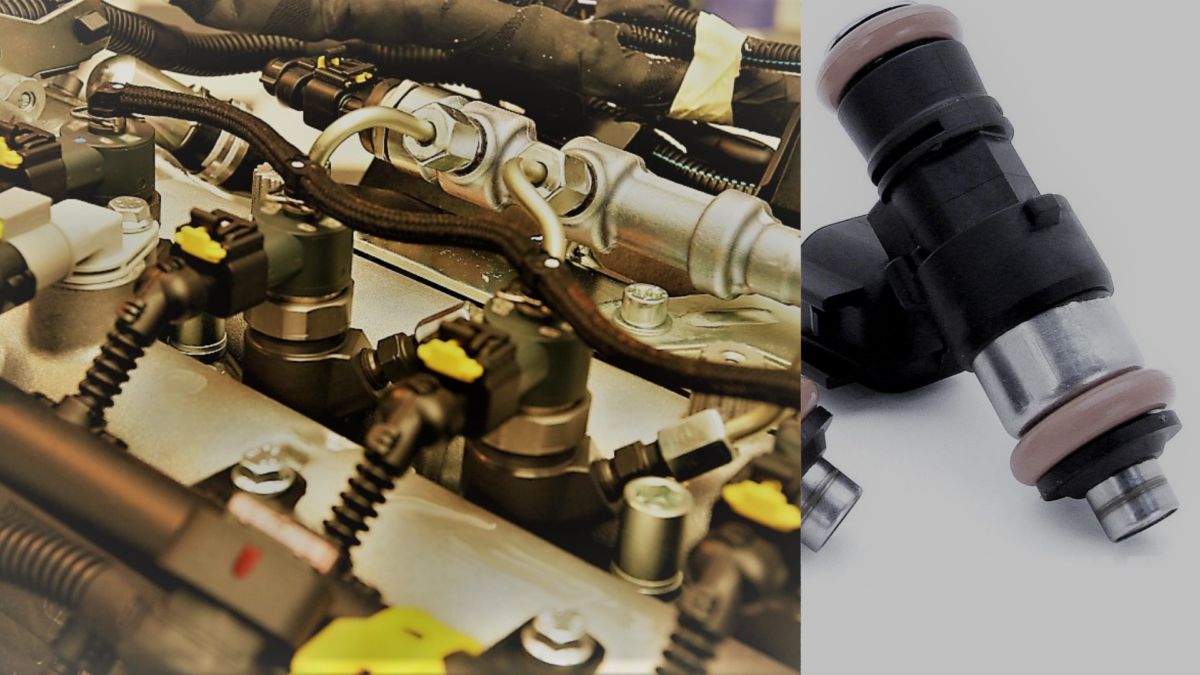
When Fuel Injectors Need Cleaning
Introduction
The performance of your car depends greatly on fuel. Fuel injectors spray the fuel into the engine’s cylinders to start the combustion process.
Fuel injectors can get clogged with residual debris and build-up resulting from the burning of the fuel. You should clean the fuel injectors regularly to get the best performance from them.
Doing so, will remove the residual debris buildup and ensure that your car burns fuel more efficiently with improved fuel efficiency.
What Does a Fuel Injector Do?
The fuel injector plays a critical role in the well-being of a car’s fuel system. Its primary role is to supply fuel to the car’s engine to keep it running.
The fuel injector has a valve with a plunger and pressurized fuel inside it. The car’s electronic control unit (ECU) opens the valve after which the injector sprays the fuel into the engine’s cylinder.
This process is done through a nozzle and it causes the internal combustion process to begin. It is the job of the fuel injector to ensure that the fuel is delivered to the cylinder at the right time, in the correct quantity, at the correct angle, and spray pattern.
The ECU can be considered as the brain of a car. It manages many different components of the vehicle including the fuel injector. It makes sure that the fuel injector is working properly and spraying the fuel as desired.
When the ECU determines that the car needs more fuel, it communicates the same to the fuel injector. This immediately opens the valve and allows fuel to be sprayed into the combustion chamber.
Signs Your Fuel Injector Needs Cleaning
Some of the most common signs your fuel injectors need cleaning include a drop in fuel economy, lack of power, rough idling, and poor overall performance. Cleaning the fuel injectors can make a drastic difference to the overall performance of your car.
How Frequently to Clean Fuel Injector
Most car manufacturers recommend cleaning the fuel injector every 15,000 miles. They also insist that you get them cleaned by a professional and certified mechanic. You can also consider cleaning the fuel injector once a year. Fuel injectors get clogged with residual dirt and debris. The quality of gasoline used also determines the amount of residual dirt and debris that accumulates on the fuel injector. You should use high-quality fuel to protect the fuel injector. This will also give you a more refined and better ride quality and performance. It will help in extending the lifespan of the fuel injector too.
How to Clean the Fuel Injector
Cleaning your car’s fuel injectors is a simple process. You can follow the below-mentioned steps for effectively cleaning the fuel injectors:
Buy a Fuel Injector Cleaning Kit
You should buy a fuel injector cleaning kit compatible with your car’s model. A typical fuel injector cleaning kit will consist of a canister of cleaner and a hose for attaching the fuel injector and the fuel rail.
A cleaning kit containing polyether amine (PEA) is good as it will dissolve the thick carbon deposits more effectively.
While most injector cleaning kit can be used for all types of vehicles, it is better to confirm with the seller before buying. Fuel injector cleaning kits are priced under $100.
Disconnect the Fuel Pump
You should disconnect the fuel injector from the fuel pump before cleaning it. Gently pull out the fuel injectors to detach them from the fuel pump.
After removing the fuel injectors, connect the fuel return line to the fuel pump. This will ensure that the fuel inside it will return to the tank while you clean the injectors.
If you are not sure, then follow the instructions in the vehicle’s manual on how to disconnect the fuel injectors.
Disconnect the Pressure Regulator
If your vehicle has a fuel pressure regulator, then you must locate it and find the vacuum line attached to it.
You should brace the vacuum line above where it connects to the regulator. Gently pull it out to disconnect it. In most vehicles, the regulator will be located behind the fuel injectors.
Connect the Cleaning Kit
The next step is to locate the fuel port which is usually attached to the fuel rail of the engine. You should refer to the cleaning kit’s directions for attaching the hose and fitting it to the port.
Ensure that the hose is securely attached to the port before cleaning the injectors. Check that the injectors do not have fuel before cleaning as the cleaner is inflammable.
Remove the Fuel Tank Cap
You should remove the fuel tank cap of your car before cleaning the fuel injectors. If the fuel tank cap is not removed, it can cause pressure buildup that can cause combustion.
This helps to prevent any pressure buildup. The cleaner uses a burst of pressure to inject the solvent into the fuel injectors. This helps to remove any stubborn dirt and debris.
Turn on the Engine While Cleaning
Turn off the fuel pump and turn on the engine before cleaning the fuel injectors. Start the engine and let it run for some time.
The motor will stop running on its own once the cleaning fluid is used up. You can expect 5-10 minutes for the cleaner to run through the fuel injectors and get used up.
Remove the Cleaning Kit
Once the fuel injectors are cleaned, remove the cleaning kit by detaching the hose and fittings from the fuel port.
Reattach the fuel pump and pressure regulator vacuum hose back after removing the cleaning kit. Finish the cleaning process by putting back the fuel tank cap.
Conclusion
Fuel injectors play an important role in running your car smoothly. It helps to keep the engine in good condition and improve fuel efficiency.
Regular servicing of the fuel injectors prevents them from getting clogged up with dirt and debris. You can clean the fuel injectors on your own.
If you are not sure of how to clean them, then you can hire a professional mechanic to do the same.

